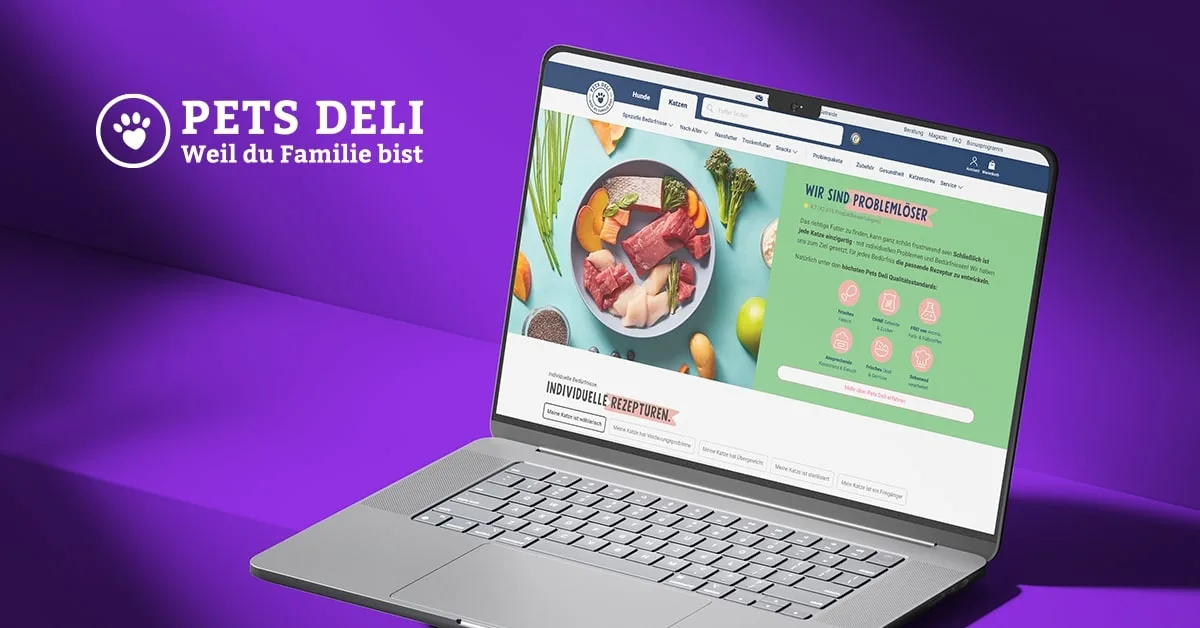- Experimentation,
- Personalization
Which Personalization and Experimentation KPIs to Measure to Win

In today's highly competitive business landscape, personalization and experimentation have become critical components of effective marketing strategies. By tailoring content, offers, and experiences to individual users, companies can create more meaningful connections with their customers and drive better results.
Similarly, experimentation allows businesses to test new ideas, learn from their successes and failures, and continuously improve their strategies.
However, to truly maximize the benefits of these approaches, it's essential to measure their impact using key performance indicators (KPIs).
In this playbook, we'll explore
👉 the most important KPIs for personalization and experimentation,
👉 helping you understand which metrics to track in order to win in the world of digital marketing.
Key Personalization KPIs
1. Conversion Rate
Conversion rate is the percentage of visitors who take a desired action on your website or platform, such as making a purchase, signing up for a newsletter, or downloading an eBook.
To calculate the conversion rate, divide the number of successful conversions by the total number of visitors and multiply the result by 100.
How does the conversion rate reflect the effectiveness of personalization?
A higher conversion rate indicates that your personalized content, offers, and experiences are resonating with your target audience and driving them to take the desired action.
✅ By tracking the conversion rate, you can measure the success of your personalization efforts and identify areas for improvement.
2. Average Order Value (AOV)
Average Order Value (AOV) is the average amount of money a customer spends per transaction on your website or platform.
To calculate AOV, divide the total revenue generated during a specific period by the total number of orders placed during that same period.
What is the impact of personalization on AOV?
Personalization can have a significant impact on AOV by offering tailored product recommendations and promotions that encourage customers to add more items to their cart or opt for higher-priced products.
✅ By tracking changes in AOV, you can determine if your personalization strategies are effectively increasing the value of each transaction.
3. Revenue Per Visitor (RPV)
Revenue Per Visitor (RPV) is a metric that represents the average revenue generated by each visitor to your website or platform.
To calculate RPV, divide the total revenue generated during a specific period by the total number of visitors during that same period.
What is the role of personalization in increasing RPV?
Personalization can help increase RPV by delivering highly relevant content and offers that entice visitors to make a purchase or engage with your brand in a revenue-generating way.
✅ By monitoring RPV, you can evaluate the overall effectiveness of your personalization efforts in driving revenue growth.
4. Customer Retention Rate
Customer Retention Rate is the percentage of customers who continue to do business with your company over a specific period.
To calculate the retention rate, divide the number of customers retained at the end of the period by the total number of customers at the beginning of the period, then multiply by 100.
How can personalization improve customer retention?
Personalization plays a crucial role in fostering customer loyalty and improving retention rates. By offering tailored experiences, content, and promotions that cater to individual preferences and needs, you can build stronger relationships with your customers and encourage them to continue engaging with your brand.
✅ Tracking customer retention rates allows you to measure the long-term impact of your personalization efforts on customer loyalty and overall business success.
Key Experimentation KPIs
1. Click-Through Rate (CTR)
Click-Through Rate (CTR) is the percentage of users who click on a specific link, ad, or call-to-action (CTA) on your website or platform.
To calculate CTR, divide the total number of clicks by the total number of impressions (views) and multiply the result by 100.
How CTR measures the success of an experiment?
CTR is a useful metric for measuring the success of experimentation, as it indicates the effectiveness of various elements such as headlines, CTAs, images, or ad copy.
✅ By comparing the CTR of different variations in an A/B test, you can identify which version resonates better with your audience and drives more engagement, ultimately helping you optimize your marketing efforts.
2. Bounce Rate
Bounce Rate is the percentage of visitors who leave your website or platform after viewing only one page without taking any further action.
To calculate the bounce rate, divide the total number of single-page visits by the total number of visitors during a specific period and multiply the result by 100.
What is the importance of minimizing bounce rate during experimentation?
A high bounce rate may indicate that your content, design, or user experience is not engaging or relevant enough for your target audience. During experimentation, it's crucial to monitor and minimize bounce rate to ensure that the changes you're testing do not negatively impact user engagement.
✅ By optimizing your website or platform based on bounce rate data, you can improve overall user experience and increase the likelihood of conversions.
3. Time on Site
Time on Site is the average amount of time a visitor spends on your website or platform during a single session.
To calculate Time on Site, divide the total time spent by all visitors during a specific period by the total number of visitors during that same period.
How time on site indicates user engagement during experimentation?
Time on Site is a valuable metric for measuring user engagement during experimentation, as it reflects how long visitors are interacting with your content and offers. A longer Time on Site typically indicates higher levels of engagement and interest in the content or experience you're providing.
✅ By tracking Time on Site, you can determine if the changes being tested in your experiments are positively impacting user engagement and driving desired outcomes.
4. Net Promoter Score (NPS)
Net Promoter Score (NPS) is a metric that measures customer satisfaction and loyalty by asking customers how likely they are to recommend your brand, product, or service to others.
NPS is calculated by subtracting the percentage of detractors (customers who rate their likelihood to recommend as 0-6) from the percentage of promoters (customers who rate their likelihood to recommend as 9-10). The resulting score ranges from -100 to +100.
How it measures user satisfaction with experiments?
NPS can be used to gauge user satisfaction with the changes being tested in your experiments, as it reflects customers' overall sentiment towards your brand, product, or service.
✅ By monitoring NPS throughout your experimentation process, you can ensure that the changes being tested align with customer expectations and preferences, ultimately leading to higher satisfaction and loyalty.
Aligning KPIs with Business Goals
Selecting the right KPIs is crucial for accurately measuring the performance and impact of your marketing efforts. By aligning your KPIs with your overall business objectives, you can ensure that you're focusing on the most relevant metrics that directly contribute to your company's success.
This alignment helps you prioritize your marketing initiatives based on their potential impact, allocate resources more effectively, and make data-driven decisions that drive growth and improve your bottom line.
Examples of how to do this:
Identify your overarching business goals: Start by clearly defining your company's key business objectives, such as increasing revenue, expanding market share, or improving customer satisfaction.
Break down business goals into specific marketing objectives: Translate your high-level business goals into more specific marketing objectives. For example, if your goal is to increase revenue, your marketing objectives might include acquiring new customers, increasing average order value, or improving customer retention.
Choose relevant KPIs for each marketing objective: Select KPIs that directly relate to your marketing objectives and help you track progress towards achieving them. For instance, if your marketing objective is to acquire new customers, relevant KPIs might include website traffic, conversion rate, and cost per acquisition.
Customize KPIs based on your industry and target audience: Consider the unique aspects of your industry and target audience when selecting KPIs. For example, a B2B company might prioritize lead generation and sales funnel metrics, while a B2C e-commerce brand may focus on website engagement and purchase-related KPIs.
Continuously evaluate and refine your KPIs: Regularly review your chosen KPIs to ensure they remain relevant and aligned with your evolving business goals. As your company grows and your objectives change, you may need to adjust your KPIs accordingly.
By aligning your KPIs with your business goals, you can create a more focused and effective marketing strategy that drives tangible results and contributes to your company's overall success.
Analyzing and Acting on KPI Data
Regularly reviewing KPI performance. To make the most of your KPI data, it's essential to regularly review and analyze the performance of your selected metrics. By consistently monitoring your KPIs, you can identify any changes in performance, track your progress towards your marketing objectives, and ensure that your efforts remain aligned with your overall business goals.
Identifying trends and patterns. When analyzing KPI data, it's crucial to look for trends and patterns that can provide valuable insights into the effectiveness of your marketing strategies. This may involve comparing data across different time periods, channels, or customer segments to identify areas where performance is improving, declining, or remaining stagnant. By uncovering these trends, you can gain a deeper understanding of what's working well and what needs improvement, allowing you to make more informed decisions about your marketing initiatives.
Making data-driven decisions for optimization. Once you've identified trends and patterns in your KPI data, the next step is to use this information to optimize your marketing efforts. This may involve making adjustments to your personalization and experimentation strategies, such as refining your targeting criteria, testing new content variations, or optimizing your website design to improve user experience. By making data-driven decisions based on your KPI performance, you can increase the effectiveness of your marketing efforts, drive better results, and ultimately achieve your business goals.
In summary, analyzing and acting on KPI data is essential for optimizing your personalization and experimentation efforts, ensuring that your marketing strategies continue to deliver the desired outcomes. Regularly reviewing KPI performance, identifying trends and patterns, and making data-driven decisions for optimization will help you stay ahead of the competition and drive long-term success for your business.
The Bottom Line
In conclusion, measuring personalization and experimentation KPIs is vital for businesses looking to create more meaningful connections with their customers and optimize their marketing efforts.
By tracking relevant metrics, you can gain valuable insights into the effectiveness of your strategies, identify areas for improvement, and make data-driven decisions to drive better results.
As the digital landscape continues to evolve, it's essential to embrace a culture of continuous optimization and refinement. Don't be afraid to experiment, learn from your successes and failures, and adapt your strategies based on the insights gained from your KPI data. By doing so, you'll be able to stay ahead of the curve, deliver exceptional customer experiences, and ultimately achieve your business goals.
Get in touch to learn how Ninetailed personalization, experimentation, and insights works inside your CMS

![4 Benefits of Headless A/B Testing [with Examples from Ace & Tate]](https://images.ctfassets.net/a7v91okrwwe3/1rAE9Eod5ybWUHtc9LEMLo/607bdcaf0512ec8f2af0f9f93dbe84f8/Ace___Tate_landscape.jpg?fm=webp&q=75&w=3840)